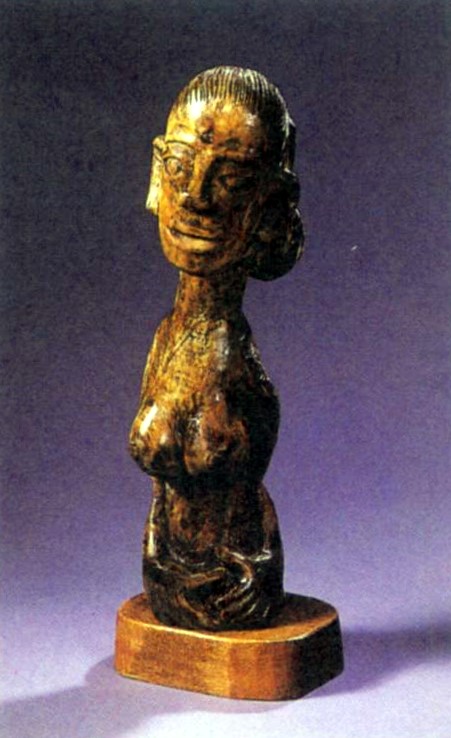源遠流長的南島語系民族文化—台灣原住民族的雕刻原住民族的社會本來是沒有「藝術家」的,部落內大多數族人都具有製作器物的手藝,一直到現代社會才有專門從事藝術創作的「原住民藝術家」。就如同原住民部落面對歷來不同外來政權之統治所遭遇的種種存續困境,原住民藝術工作者在創作上也面臨許多問題,例如:如何以部落的傳統價值觀,去調適、對抗或自外於挾龐大政經勢力的主流社會。就雕塑本身而言,形式美感本就是評斷作品優劣的要素,透過原住民傳統審美觀所形塑的獨特造型,對於一般大眾受主流社會價值體系宰制的美感經驗而言、或對於藝術家受學院訓練的美學標準而言,常常是具有令人 驚豔的震撼力與顛覆性的啟發作用的。
註1:參見陳奇祿著,1961,《臺灣排灣群諸族木雕標本圖錄》,南天書局。
Connection with Austronesian Cultures—Aboriginal Sculptures in TaiwanBefore the Han Chinese immigrated into Taiwan in the 17th century, the aborigines had long called Taiwan their home. The aboriginal tribes in Taiwan can be divided into Pingpu Tribes, who have been deeply influenced by the Han Chinese cultures, and Gausun Tribes, who still maintain their own cultures and languages. There are totally ten major tribes in the Gausun tribes, including Atayal, Saisiat, Bunun, Tsou, Rukai, Paiwan, Puyuma, Amis, Yami and Thao. Each of them has its own language. The complicated and diversified connections among their languages have made linguistic anthropologists come to the assumption that Taiwan might be the starting point of the migrations of peoples speaking Austronesian languages. Their sculpture, pottery, singing, dancing and other forms of cultures, a long integral part of their tribal daily life, are now recognized as of advanced artistic expressions. Different tribes excel at different forms of arts, producing impressive artworks. For example, the Paiwan tribes (including Paiwan, Rukai and Puyuma) are reputable for their sculptures and they are known as "The Tribes of Arts." Originally in these Taiwanese aboriginal societies, these was no such a social rank as "artists." Most of the tribesmen were familiar with craftwork making. It is not until the modern time when there are the so-called "aboriginal artists" who are professionally dedicated to artistic practice. Just like their ancestors who struggled with rules by different foreign regimes, aboriginal artists face many problems in their creation, such as how to adjust to or find a balance between the mainstream society that has overwhelming political and economic powers and their own tribal tradition. For sculpture, the beauty in the form is one of the criteria judging the quality of the works. The unique styles of the aboriginal sculptors originated from their traditional tribal aesthetics often can produce an eye-opening and thought-inspiring effect on the general public who are constrained by the dominant social values and aesthetic standards imposed by academically trained artists.
|

